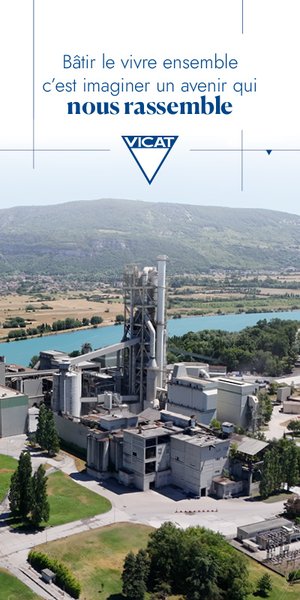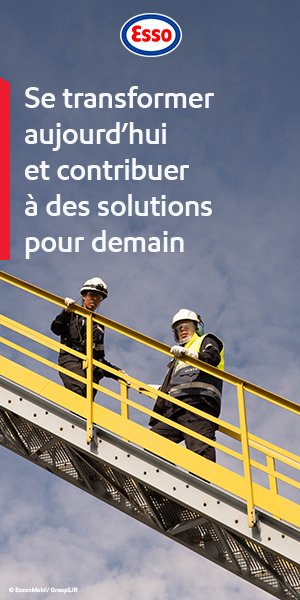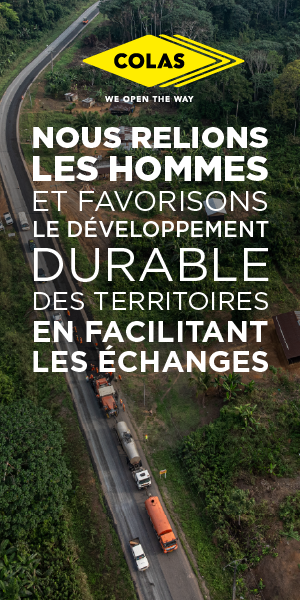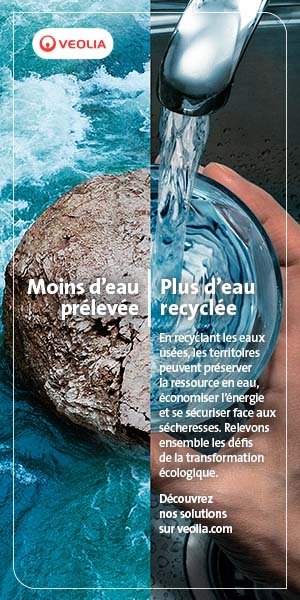Politique Internationale — How is the Chinese energy sector responding to the demands created by the country’s growth?
CGN general staff — China is currently undergoing a process of transition. The country is coming out of a phase of high-speed development into another phase turned towards “high quality”. In consequence, the Chinese electricity system is becoming more diversified and cleaner — with a reduction in CO2 emissions. As a signatory to the Paris climate agreement, Beijing plans to promote innovative projects. This can be seen especially in the production of energy with the aims of energy sobriety, a low-carbon policy and commitments to industrial safety. The implementation of limiting the consumption of coal opens new prospects for the country: renewable energies, starting with windfarms and solar power, contribute to sustainable growth. The production of nuclear electricity is growing as well. With this rise in non-fossil energy, China is striving to respect its commitments on the climate.
P. I. — What is the weight of nuclear energy in CGN’s activities?
CGN — China General Nuclear Power Group (CGN) is a company specialised in clean energies. Its aim is clear and precise: to develop clean energy so as to contribute to the wellbeing of Chinese society. From this comes an active policy favouring energy without CO2 and therefore more respectful of the environment. On the operational level, CGN’s four big fields of activity are well defined: nuclear electricity; the fuels needed to produce it; alternative energy sources; and, finally, finance. But the horizon of the group goes beyond these branches: CGN is also exploring new activities linked to the application of nuclear technology to other sectors. At the end of last year, its portfolio of assets reached 740 billion yuan. With a clean energy production of 56 gigawatts (GW), this makes CGN one of the biggest Chinese companies in this domain. As for nuclear energy, we operate 24 reactors in China with an established total power production of 27 GW. In parallel, four reactors are under construction, for an extra 4.6 GW. Still in nuclear energy, CGN is developing projects abroad, in particular in Britain where the Asian group and its long-time partner EDF are working jointly on the power stations of Hinkley Point C, Sizewell C and Bradwell B.
P. I. — How does CGN reconcile this nuclear boom with its ambitions as regards renewable energy?
CGN — The experience gained in nuclear energy serves as a basis for CGN to progress rapidly in renewable energy resources. Both nuclear and renewables are in the category of clean energy and, because of this, they are efficient within the framework of the struggle against climate change. Our roadmap includes the struggle against global warming which involves at one and the same time a reduction in CO2 emissions and economies in energy. In green energies — solar and wind — CGN is already established in about 20 countries. The power established amounts to 28.9 GW of which 10 GW are outside China. Biogas is also a strong element in our policy in favour of renewables. CGN has adopted the technology of anaerobic fermentation which allows the production of green gas from straw and manure from livestock. After refining and purification, we obtain natural gas and organic fertilisers. This industry is booming in China. The Hebei Hengshui complex built by CGN is the biggest project of its kind in Asia. It is capable of producing up to 33 million cubic metres of biogas a year and up to 200,000 metric tons of solid and liquid bio-organic fertilisers. These natural gases can replace 42,000 tons of coal a year, representing a reduction in carbon dioxide emissions of 320,000 tons. Simultaneously, the problem of smog caused by burning straw is easily resolved.
P. I. — In a changing energy context, what are your strategic orientations for the years to come?
CGN — The energy sector represents both challenges and opportunities. CGN is very conscious of this and wants to face up to this. With the ambition of becoming a group dedicated to clean energy and to be a world leader in its sector. To achieve this aim, the group has defined four big strategic orientations: rigorous organisation; specialised management; international development; and, finally, a way of functioning that responds to market logic. A large industrial blueprint, baptised “4+X”, was drawn up then implemented. Capital was allocated to four big sector-specific platforms plus two geographic zones — China and abroad. Within the framework of this new configuration, the four main activities — nuclear energy, fossil fuels, new energies and finance — depend on coordination. In the background, there is also the environmental dimension: determined followers of the Paris agreement, China and France are actively encouraging energy economies and the reduction of CO2 emissions. This gives CGN substance to cooperate with EDF internationally, through research, the development of nuclear energy, the continuing strengthening of safety and the reprocessing of spent fuel. In sum, China and France are constantly learning from each other. The two countries want to cooperate and carry out win-win projects.
P. I. — Still on nuclear power, CGN has some great international ambitions. What are its principal strengths on a market dominated by traditional players?
CGN — CGN began its nuclear activity with the Daya Bay power station. Since then, the group has regularly underlined several basic great principles: priority to safety on the one hand; priority to quality on the other; and, finally the pursuit of excellence. In its nuclear activities, CGN is guided by the rule of “doing things well right from the start.” The problem of safety is a natural must: without nuclear safety, there is no CGN. It is even the first concern of the group’s managers. Be it a matter of the rhythm of the projects, economic gains or even more the availability of resources such as uranium, none of these parts comes before safety. This is CGN’s priority. A system of quality control, that is solid and standardised, has been set up to head off the slightest flaw at each stage of the projects. The highest level of demand in the matter of safety guides the industrial chain. This is true as well for the life cycle of the plants of the group which has extended these requirements to all of its partners, to equipment makers as well as to specialists in conception, construction, operation and of decommissioning nuclear power stations.
P. I. — How can CGN guarantee the management of a project that is at the same time standardised, specialised and efficient?
CGN — CGN has entered a new era. With operations involving very many units and several groups of factories, a specific model of management has been put in place, at once professional, normalised and intensive. Concretely, we have set ourselves three missions: raise the level of skills through specialisation of crafts; improve the efficiency of management thanks to the standardisation of procedures; and increase the economic spin-offs through synergies. Finally, the improvement of the level of safety comes from the global efficiency of operations combined with that of the management of the project. This functioning allows new units to achieve quickly the standards of “mature” CGN units — that have been in service for more than three years — in matters of safety. The operational performance of the group’s six “nuclear bases” that make up our park have reached a high level. According to the criteria of the World Association of Nuclear Operators (WANO) which measures the level of safety of nuclear installations in the world, the “mature” CGN units are among the 10 per cent of installations that received the best grading with regard to 73.5 per cent of WANO criteria in 2018. As for our new units, they are among the 25 per cent of recent installations that obtained the best assessment of 78.3 per cent of WANO indicators. This association has praised the CGN system on several inspection visits. Unit 1 of the first phase of the Ling Ao nuclear power station has been operating at maximum efficiency for more than 4,900 days — a world record for units of that type worldwide.
P. I. — What is the impact of Hualong 1, the specific nuclear technology developed by CGN?
CGN — CGN’s third priority aims to strengthen the company’s scientific and technological skills. The group is gambling even more on innovation because competition is raging in the nuclear energy sector. This battle concerns as much technical skills as project management. To meet this, not only are adapted institutional mechanisms needed, but also sufficient investments. As a guide, CGN’s annual investment in scientific research represents about 4 per cent of the operational result. Over the past few years, the company has successfully developed Hualong 1, third-generation nuclear technology with separate intellectual property rights. The technical indicators of Hualong 1 all conform to American and European third-generation technological norms. Hualong 1 offers an optimal balance between safety, technological maturity and economic performance. As you perhaps know, CGN has set up a research and development system on three levels, national, group and company, as well as a world innovation alliance.
P. I. — Are the Chinese population convinced of the validity of an advanced nuclear strategy?
CGN — That is our fourth priority. That is to say the transparency and acceptability of the projects. After the Fukushima accident, public communication became a major challenge for the development of the nuclear industry. So, CGN champions a transparent method: not only is there more information divulged, but the communications tools are more innovative so as to gain the trust of Chinese society.
P. I. — Is the Taishan project a model in terms of cooperation with EDF?
CGN — The first phase of the project is the most important cooperation ever carried out between China and France in the energy sector. The operation is commensurate with the stakes involved: the Taishan 1 and 2 units are the first EPR reactors in the world to go into commercial operations. CGN’s experience is not an empty phrase: for more than 30 years, it has been involved continuously in the construction and operation of nuclear power stations. This is a great asset, together with the strategic cooperation between China and France on the atom. Taishan benefited from the commitment of well-known industrialists with great knowhow in the working of the project. The feedback from two pilot EPR projects in Europe also counted for a lot. The construction of the Taishan nuclear power station therefore takes on major importance for the nuclear industry in both China and France. The two units of the first phase of the project are a model of cooperation between China and the outside world, both in conception and in construction. This model will boost cooperation in third-generation nuclear power. It encourages exchanges between Chinese and French industrialists in the domain of the manufacture of nuclear equipment. Finally, Taishan provides precious insights for the start-up of similar units, in particular the Hinkley Point C power station, built by China and France in the United Kingdom. It is also a model for expansion towards other markets.
P. I. — No one should any more doubt the feasibility of EPR?
CGN — The successful construction in Taishan of the first EPR reactor in the world has proven the feasibility of this technology. Its advantages in terms of safety and reliability will be demonstrated all through the operation of the station. In parallel, thanks to the construction of this new reactor, Sino-French nuclear cooperation has been strengthened even more. This liaison between EDF and CGN is an example for Sino-French cooperation in general. This is also true for Sino-European cooperation in general, in the nuclear and other sectors.
P. I. — What conclusion can one draw from the cooperation between CGN and the French nuclear industry?
CGN — This year is the 55th anniversary of the establishment of diplomatic relations between China and France. Sino-French cooperation in nuclear energy is backed by 40 years of success. CGN and EDF, the main two actors in this cooperation, began by building Daya Bay, which was the first nuclear power station in continental China. It has a capacity of 1 GW for a total investment of $4 billion. It is the biggest joint enterprise between China and a foreign country ever launched in our country. It dates from the beginning of China’s policy of opening up and Daya Bay is one of the most striking illustrations of this. This success led to others: in the 1990s, CGN continued cooperation with France to build the Ling Ao power station. With that, the production of nuclear electricity in China made a substantial leap.
P. I. — What are the most recent stages of cooperation between China and EDF?
CGN — In the 21st century, CGN and EDF were again associated to build the Taishan nuclear power station. Then in October 2015, a new chapter in cooperation opened: in the presence of President Xi Jinping and of the British prime minister of the time, David Cameron. CGN signed an agreement with EDF to develop three big nuclear projects in the United Kingdom and to project themselves, hand in hand, towards other markets. In Britain, the power stations of Hinkley Point C and Sizewell C will use French EPR technology. With EDF in charge of the project and CGN as its partner. Conversely, the Bradwell B station will call on the Chinese Hualong no 1 third-generation technology: this time, CGN will pilot the project with EDF at its side. CGN has been cooperating with France for 40 years. That is to say that the relationship of trust is a solid one.
P. I. — In the domain of innovation, what are the latest most significant advances for CGN?
CGN — CGN has developed a technology of treatment of dangerous, solid waste by plasma. The aim is to decompose quickly organic pollutants, such as dioxines, into inoffensive small molecules and to solidify unorganic pollutants, like heavy metals, by vitrification. This technology permits the reduction of solid waste, to render it harmless, then stabilise and recycle it. It also opens a new way for the treatment of waste in other sectors, such as medical, household, electronic, mud with heavy metal content and mineral oils without forgetting waste that is highly toxic and potentially dangerous. In a similar vein, CGN and the Chinese Tsinghua university have jointly developed a treatment of industrial wastewater by electron beams. This permits the efficient elimination of pollutants that are difficult to treat by conventional means. All this shows that CGN has become a high-technology company capable of developing independently instead of relying on imports of technology as in the past.
* The China General Nuclear Power Group (CGN) is one of the biggest companies in China’s nuclear sector.



















